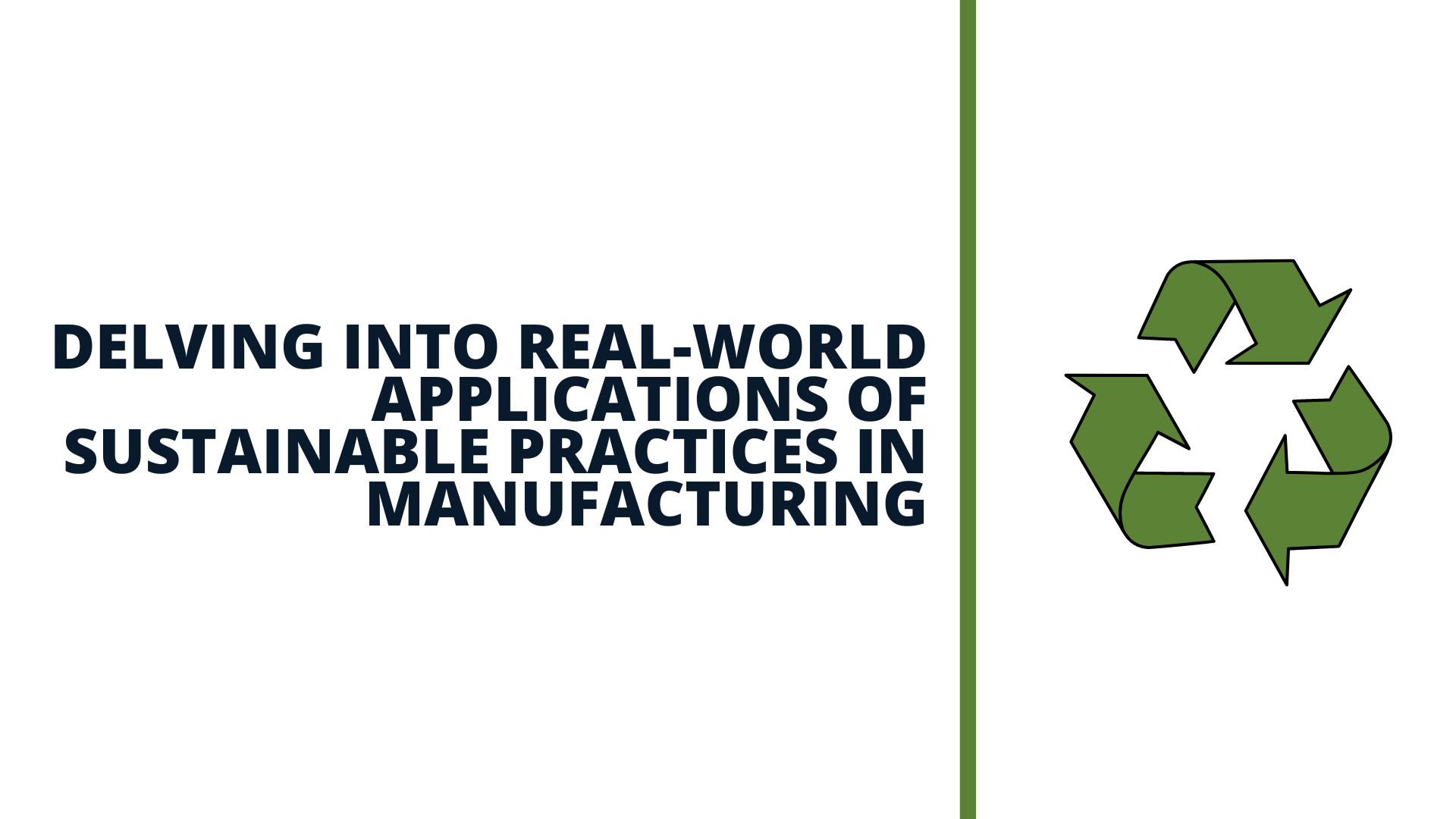The manufacturing sector stands at the crossroads of innovation and sustainability. As global awareness of environmental issues grows, industries are increasingly adopting sustainable practices to reduce their ecological footprint and improve efficiency. This blog delves into the real-world applications of these practices, focusing on waste reduction techniques and green energy integration, providing actionable advice for manufacturers looking to embark on a greener path.
Waste Reduction: More Than Just Recycling
Waste reduction is a critical aspect of sustainable manufacturing, transcending the basic act of recycling. It’s about redesigning product life cycles and production processes to minimize waste and resource consumption. Here are practical ways manufacturers are implementing waste reduction:
Lean Manufacturing
Lean manufacturing is not just a buzzword; it’s a comprehensive approach that targets waste elimination while boosting efficiency and quality. Techniques like value stream mapping, 5S, and continuous improvement (Kaizen) are instrumental in identifying non-value-added activities and streamlining operations. Real-world applications show that lean practices not only reduce waste but also lead to significant cost savings and productivity boosts.
Circular Economy Models
Moving beyond the traditional linear economy of “take, make, dispose,” manufacturers are embracing circular economy principles. This involves designing products for longer life, reparability, and recyclability, thus reducing waste and extending resource utility. Companies like Philips and Dell are leading by example, offering product-as-a-service models and implementing take-back schemes to recycle and refurbish their products.
Precision Manufacturing
Advancements in technology have enabled precision manufacturing, reducing material waste significantly. Techniques like additive manufacturing (3D printing) allow for layer-by-layer construction, which minimizes excess materials while allowing for complex designs. Similarly, CNC machining has evolved to optimize cutting paths and reduce scrap material.
Green Energy Integration: Powering Sustainable Manufacturing
Transitioning to green energy sources is a formidable step toward sustainable manufacturing. It not only reduces the carbon footprint but also aligns with global sustainability goals. Here’s how manufacturers are integrating green energy:
Solar Energy Adoption
Manufacturers are increasingly installing solar panels on factory roofs and unused land. Companies like Tesla have made headlines with their massive solar installations, but small and medium-sized enterprises are also finding solar energy an affordable and sustainable option, especially with governmental incentives and falling technology costs.
Wind Energy Integration
Wind energy, being clean and renewable, is becoming a popular choice for manufacturers, especially in regions with high wind speeds. Large-scale wind turbines can power manufacturing plants, contributing significantly to reducing reliance on fossil fuels. In cases where direct on-site wind power generation isn’t feasible, manufacturers can invest in wind energy projects or purchase wind energy credits.
Energy Efficiency Upgrades
Switching to green energy is part of the equation; enhancing energy efficiency is the other. Manufacturers are retrofitting old equipment with energy-efficient alternatives, adopting LED lighting, and implementing energy management systems to monitor and control energy use. These upgrades not only reduce energy consumption but also cut operational costs.
The Path Forward: Collaboration and Innovation
The journey to sustainable manufacturing is not a solo endeavor. It requires collaboration among industry players, governments, and communities. Public-private partnerships can drive innovation, scale sustainable practices, and create frameworks for sharing best practices and resources.
Moreover, innovation is key to overcoming the challenges of integrating sustainable practices. Investing in research and development, embracing digitalization, and fostering a culture of sustainability can propel manufacturers toward greener, more efficient production processes.
In conclusion, sustainable practices in manufacturing are more than environmental obligations; they are pathways to innovation, efficiency, and long-term profitability. By adopting waste reduction techniques and integrating green energy, manufacturers can contribute significantly to a more sustainable world while positioning themselves as leaders in the eco-friendly market. The time for action is now, and the opportunities are vast. Let’s embrace sustainable manufacturing as the new standard for a greener, more prosperous future.









